



Internet providers are notoriously unpopular, but some are more unpopular and earn less than others. In this article, we’ll look at the benefits of being proactive and what it’s like to be among ISP owners who out-serve, win on ARPU and churn.
For every internet service provider and any business in general, customer happiness matters a lot. Happy customers stay longer, while unhappy ones leave quickly. This “happiness” depends completely on the customer’s experience. So, give customers a great experience and they’ll buy more.
Indeed, according to PwC’s survey, 73% of customers are willing to pay up to 20% more for great experiences. While more than half of consumers will switch to a competitor after only one bad experience.
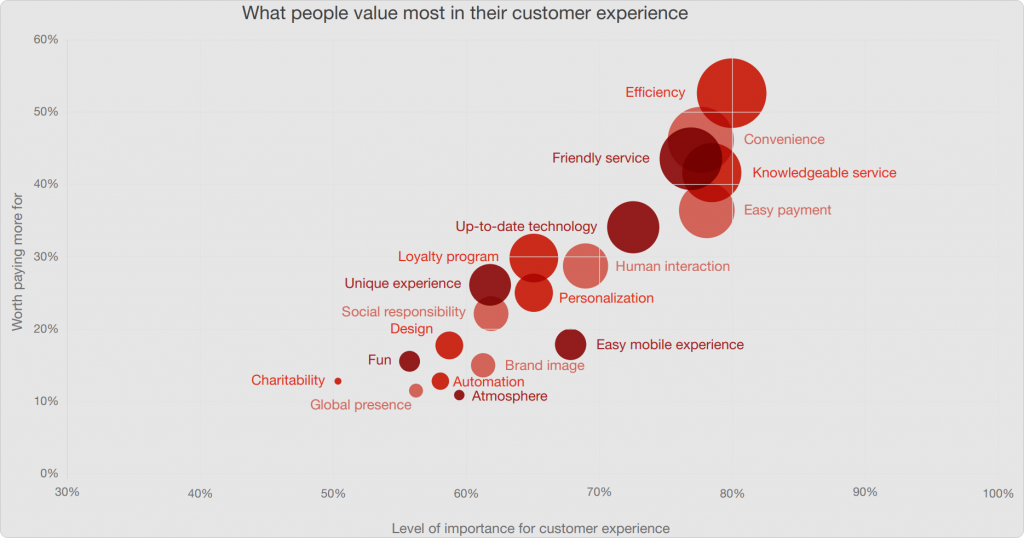
Today, this isn’t just about answering support calls quickly; it’s about preventing those calls from happening in the first place. Providers who proactively monitor and manage quality of experience are seeing dramatic improvements in customer satisfaction, which directly affects your earnings. Those who use proactive customer experience methods see customer loss decrease by 40-60% and revenue per user rise by 25-30%.
We all want fast internet, but what does that really mean? While bandwidth typically gets the most attention, latency (and bufferbloat) is often more crucial for a “fast-feeling internet”. If your latency is too high, all those interactive applications (YouTube, Netflix, Fortnite, Zoom, etc.) that customers use all the time start feeling really, really slow. And in your customers’ minds, they don’t really know about latency. They just think about the plan’s speed.
The result? Customers think they’re not getting their full plan speed, run speed tests, get poor results, and call support (often), which causes customer churn and drives up support costs. Anyway, price and quality remain at the top of customers’ minds as they make internet provider choices.
So, what can be done when traditional network management systems (NMS) with ICMP ping, SNMP tools, and QoS solutions are all short on proactively improving customer experience? The short answer is QoE-based monitoring and traffic management, which critically augments existing network element-based monitoring solutions.
It can directly extract QoE metrics (latency, loss, jitter, and throughput) from the subscriber’s traffic with a high granularity (per subscriber and IP address) and with a higher frequency than ICMP or SNMP allow. It also gives insight into the subscriber experience, including home Wi-Fi quality (read about how ACS can help troubleshoot Wi-Fi Issues). So you can easily find bottlenecks and weak points to plan network upgrades better.
Splynx gives you complete carte blanche to expand your system’s capabilities with additional modules and third-party software, so, depending on your network topology and goals, you can choose any modern QoE/QoS, whether Preseem, LibreQoS, Paraqum, Bequant or something else. Whichever QoE platform you ultimately select, its integration and sync with Splynx stay the same.
As an example of how Splynx works with network optimization platforms, here is the Splynx-Preseem integration. When connected, Splynx automatically shares your customers, plans, access points and network equipment with the optimization platform while maintaining consistent naming conventions. This relationship remains dynamic; whenever you update customer information or their plans in Splynx, these changes are automatically implemented in the connected platform within about a minute, eliminating the need for duplicate data entry.
This integration enables TCP-based monitoring that identifies actual user experience issues without injecting additional network traffic, revealing problems that traditional ping tests might miss. Through advanced queue management algorithms like FQ-CoDel, you can differentiate between interactive traffic (gaming, VoIP) and bulk downloads, helping maintain low latency even during peak usage, which can significantly reduce support calls and increase customer satisfaction in general. While you can apply targeted traffic management through the optimization interface, you’ll continue to manage all customers, their plans, billing and everything in between through your familiar Splynx system.
By monitoring connectivity errors, you can assess the overall health of your network. If they are systematic, it is worth checking that there are no IT infrastructure problems.
QoE can also solve other problems. By evaluating RTT and retransmits, marketers can sell equipment with better coverage and functionality and provide information on channel utilization and quality through the Customer Portal. Such steps will help raise QoE and reduce possible customer churn.
Below are key takeaways backed by South African techCONNECT and Malawian CTN success stories. Both wireless ISPs maximize Splynx’s modular architecture, expanding it with various integrations (Preseem, LibreQoS, Whalebone Peacemaker, etc.) for a more proactive approach to enhancing subscriber experience, boosting revenue, reducing support calls, and truck rolls.
1. Monitor network performance in real time
By combining third-party QoE/QoS solutions with Splynx’s Network Management module and leveraging Network Sites feature, technicians can directly access different client performance metrics (TCP Round Trip Time, TCP Retransmits, and Throughput) during support calls and pinpoint exact problems that would previously require expensive truck rolls.
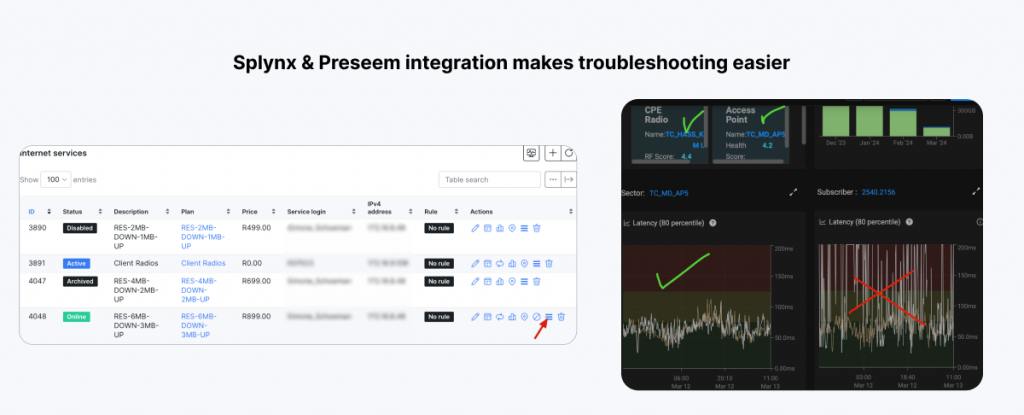
Here are 5 real benefits from the experience of several of our clients. One of them uses Preseem, and another preferred LibreQoS, which stands out for its open-source approach:
With Splynx and LibreQoS sorted, it’s set and forgotten. It just works in the background and cleans everything, giving our customers a good experience.
We spotted a customer using the service while standing on their deck outside and using internet and it’s too far away. Something we could never diagnose before.
2. Turn Level‑1 support into proactive problem‑solvers
Another proactive support strategy for ISPs is communicating with customers regularly and transparently, ideally before they need to contact your support. And if it has already happened, Splynx equips your frontline team with all the required data and channels to keep that conversation flowing, from the moment a ticket is received and assigned to an agent until it is resolved and customer feedback is collected.
If a client phones in and speaks with Level 1 tech support and tech support can’t give them answers, the clients want answers now. Advanced QoE-based monitoring has enabled us to give the client’s answers immediately.
This eliminates the frustration of escalations and callbacks, resolving customer issues in a single interaction.
3. Turn support calls into upsell wins
What begins as troubleshooting often converts to additional revenue. Even during a troubleshooting call, it’s better to keep revenue opportunities (and customer satisfaction) front and centre.
Splynx integration with 3CX streamlines this process by connecting calls to existing tickets (here is more about linking a call to an existing ticket). From there, support engineers can immediately access built-in tools like Ping & Traceroute, Wi-Fi analyzer or QoE solution to pinpoint bottlenecks and suggest practical upgrades the moment they matter.
Let’s say a customer calls in complaining about slow internet. The support technician creates a ticket in Splynx directly from the call. Using Ping & Trace route from within the platform, he confirms the core connection is stable. Then, he launches ACS Wi-Fi diagnostics and sees high interference on the 2.4 GHz band. They cross-check usage patterns through a QoE integration and discover that heavy multi-device streaming is a factor.
So, the technician suggests a dual-band router upgrade that supports 5 GHz and better handles the household’s load. Depending on the usage data, he may offer an upgraded service plan, just 5% more per month, but with performance benefits, the client will feel it immediately.
When the customer agrees, the loop closes seamlessly. The technician assigns a router directly from Splynx’s Inventory module, triggering automatic invoicing and syncing everything with the accounting system. Stock levels adjust in real time, and the sale is correctly categorized, whether it’s a rental, a purchase, or bundled with installation.
If you’re using Splynx’s ACS server, the new router can be auto-provisioned when connected. There are no extra steps or manual input, just a clean handoff from support to upsell to a satisfied customer.
As techCONNECT’s CEO Arno Joubert explains: “That becomes a sales tool as well. That becomes an upsell tool.”
This is proactive service at its best. It solves real issues while creating tangible value for both provider and customer.
4. Make cybersecurity your competitive advantage (and upsell opportunity too)
By using a full-featured (on-premise or cloud) secure DNS resolver like Whalebone on your Splynx instance, you meet 2 key points:
To get a complete overview of what’s happening on your network. Just open DNS threats in Networking tab. Using integration, Splynx allows you to see all customers, their services, and details about their traffic and categories of blocked threads.
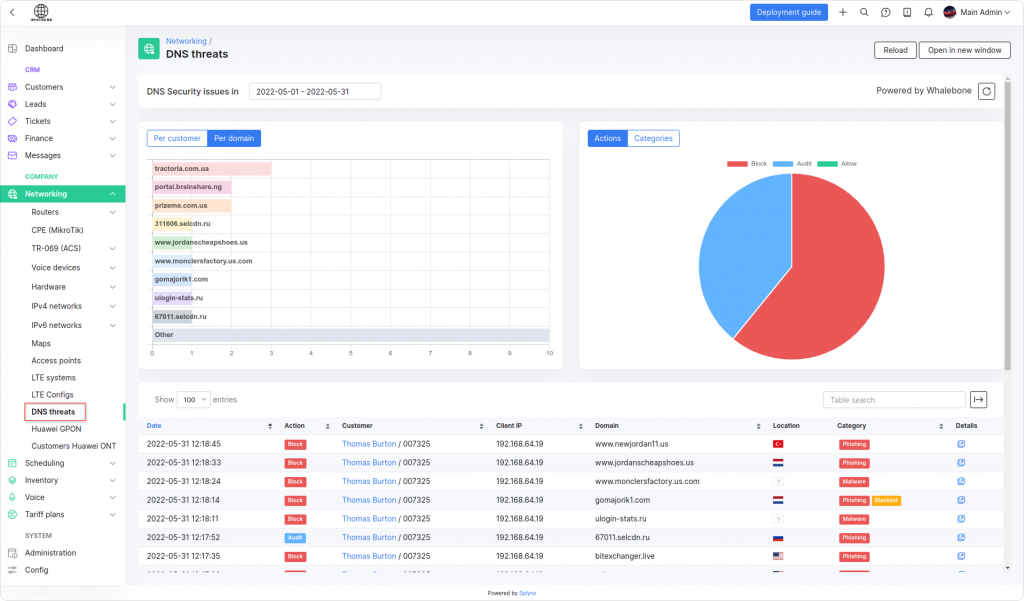
You can also open any customer from the list, sort and display only their DNS security issues. The system will show details about actions, domains, and categories of blocked threats (malware traffic, phishing and blacklisting).
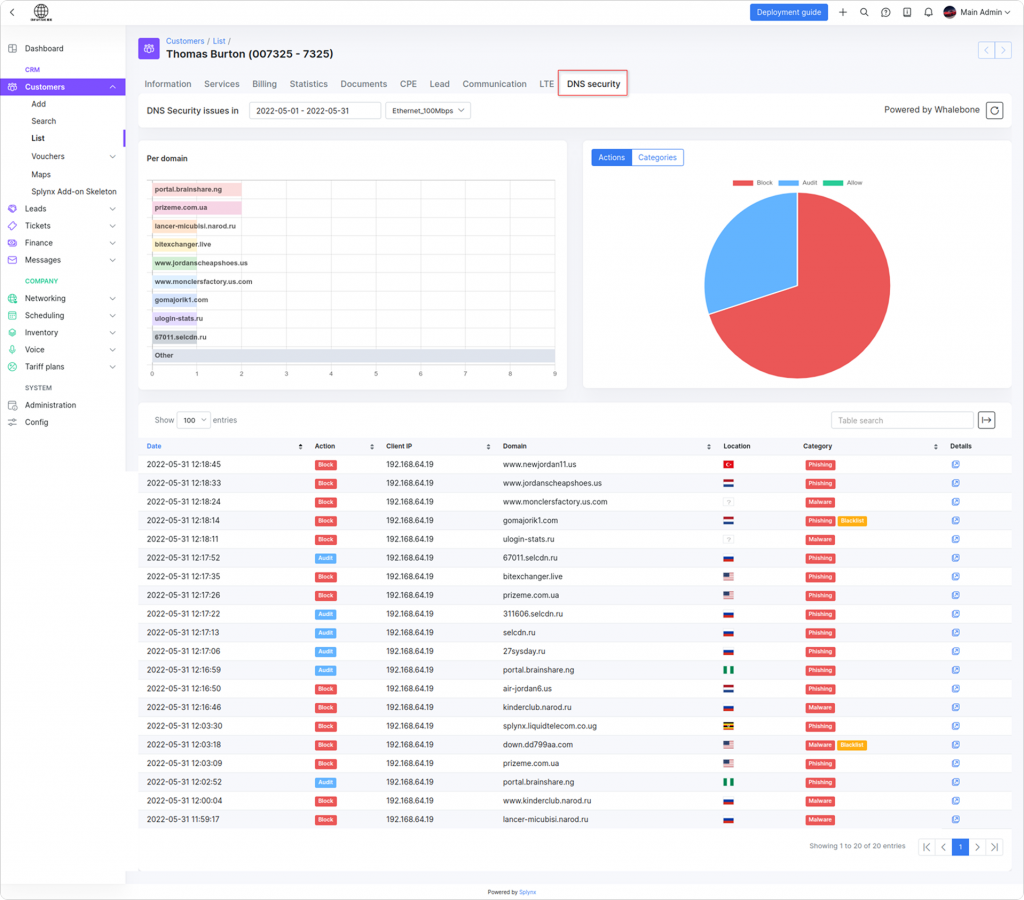
Speaking about upselling, Whalebone and Splynx integration lets you package and sell additional security services, determining their price based on region and customer. For example, create two SSIDs: one with regular security and another with content filtering configured in Whalebone. Define filter severity or add custom domains to block (this option is popular for kids’ networks with parental control).
techCONNECT uses Whalebone DNS security as a brand differentiator, positioning itself as a security‑focused provider that actively protects its customers and strengthens its reputation. If admins see any threads, they contact clients and tell them there is such a problem and can upsell a security service.
We actually try to be proactive and phone the clients and say, look, there’s an issue. We actually record and send them a little 2-minute video. We’re not browsing or not monitoring what they’re browsing. We don’t know what they’re doing, but we can see that DNS security issues are popping up.
5. Let customer reviews drive growth
Collect and use customer feedback to improve your service and support. It can also be one of the most solid arguments in convincing people to switch from their existing providers. Use surveys, ratings, reviews, and other methods to gather valuable feedback.
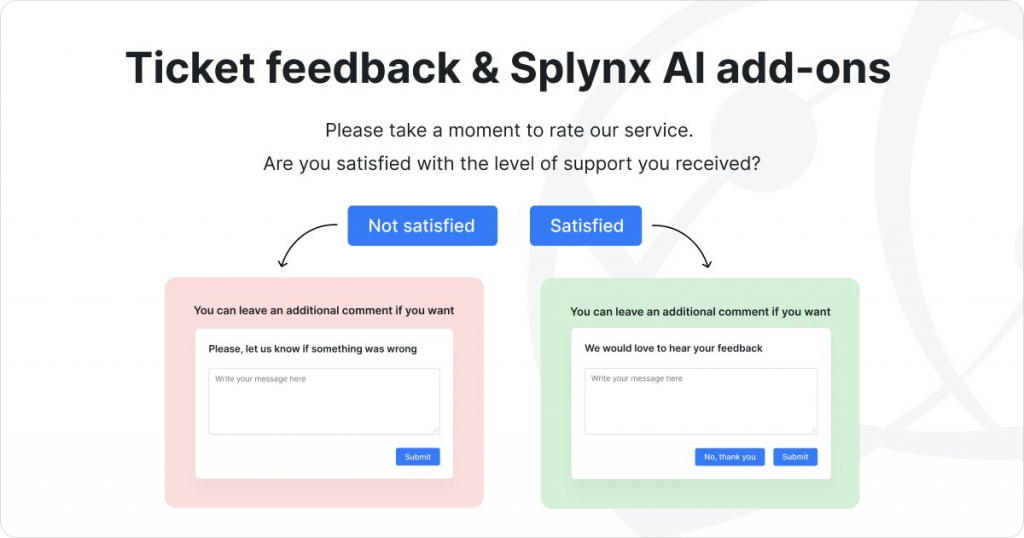
With our Ticket Feedback add‑on, you can measure every interaction through a single report. It stores positive feedback and highlights outstanding performance while revealing areas for improvement. You can also add one‑click survey buttons to email notifications or canned responses and watch your customer satisfaction rate in real time.
Encourage your customers to leave reviews or mention you on social media. Don’t forget about Google reviews, either. They are still an excellent opportunity for a significant reputation boost without any cost. When a ticket closes with positive feedback, just invite the customer to post a Google review when goodwill is highest. This simple flow has become techCONNECT’s biggest growth engine.
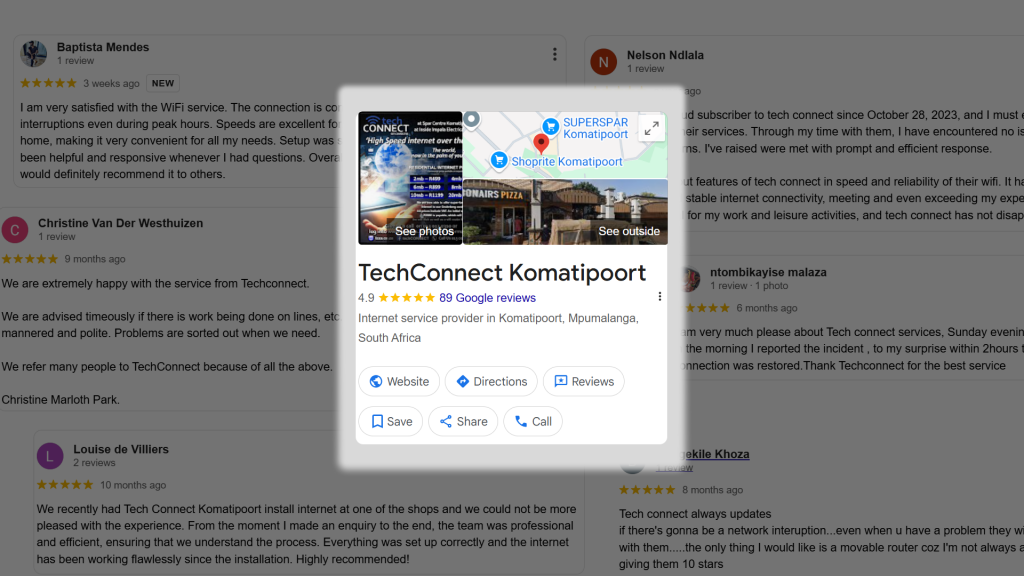
Reviews constantly reference perceived speed gains (a result of lower latency, not higher bandwidth), positioning techCONNECT as the quality leader and winning over competitors’ customers. Word of mouth is still the most superior kind of marketing. Here is our complete guide on how ISPs can get more positive Google reviews.
A proactive approach helps ISPs stay ahead of competitors instead of catching up. Check your network quality constantly and inform customers before issues become noticeable. Test new service plans with small customer groups and quickly make improvements. Create a community for loyal users to share their thoughts and suggestions. Constant improvement, clear communication, and fast updates make being proactive an advantage that’s tough for competitors to match. Splynx is ready to help you build everything under one roof, without complex workarounds and juggling between multiple different systems.
Find out how Splynx helps ISPs grow
Learn more